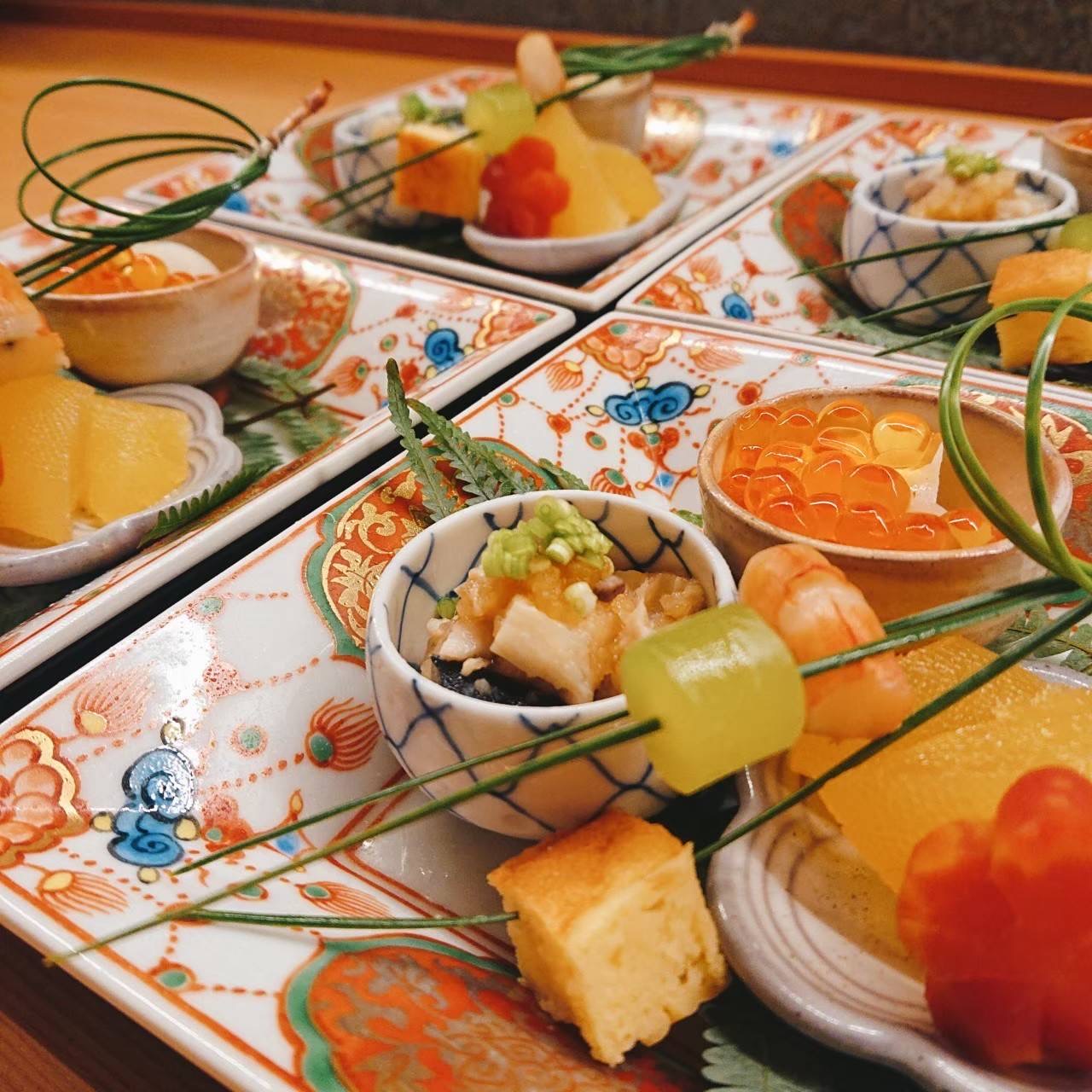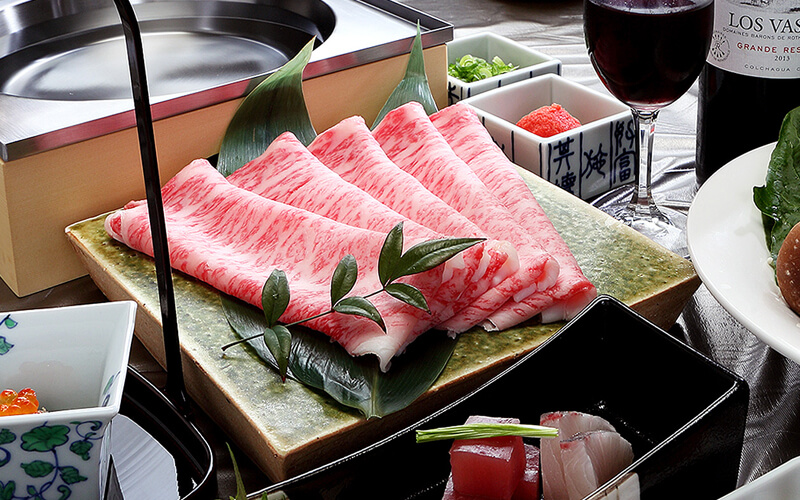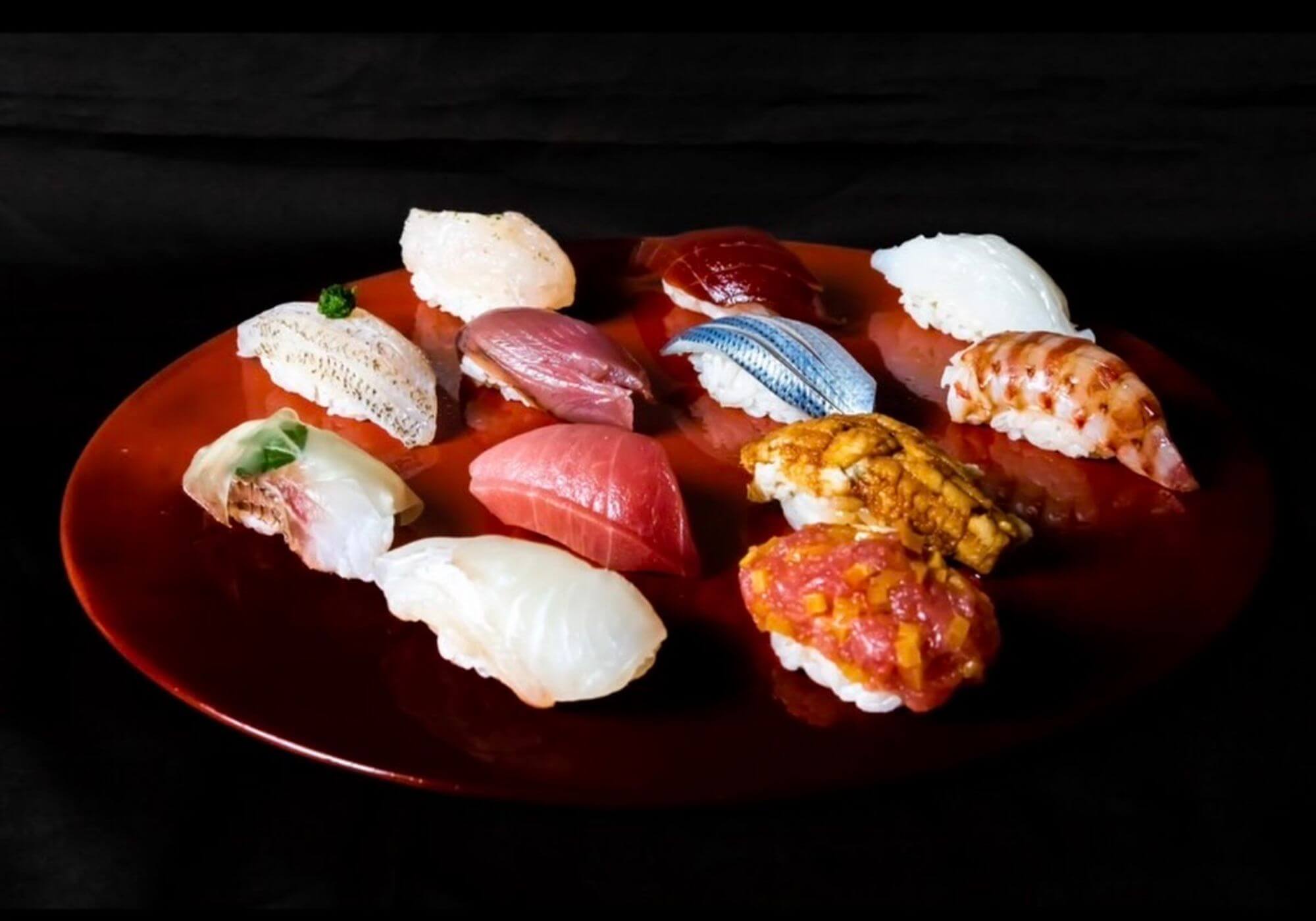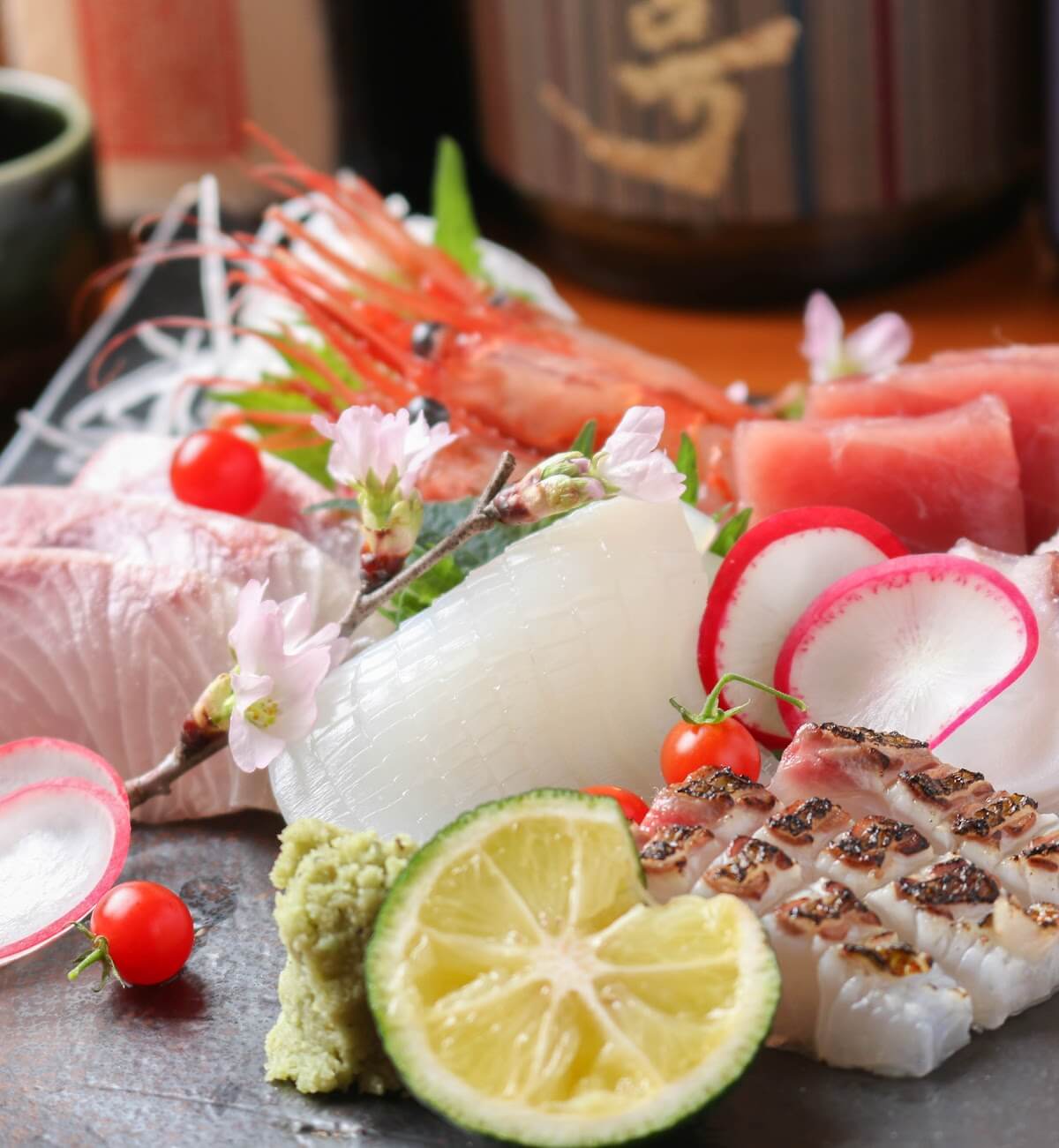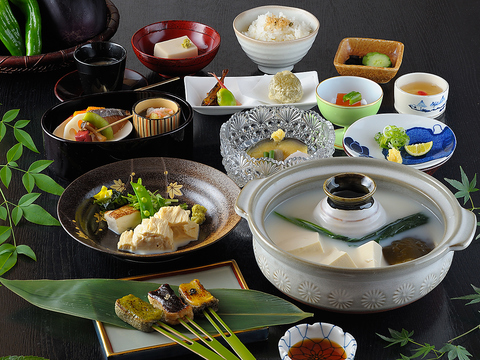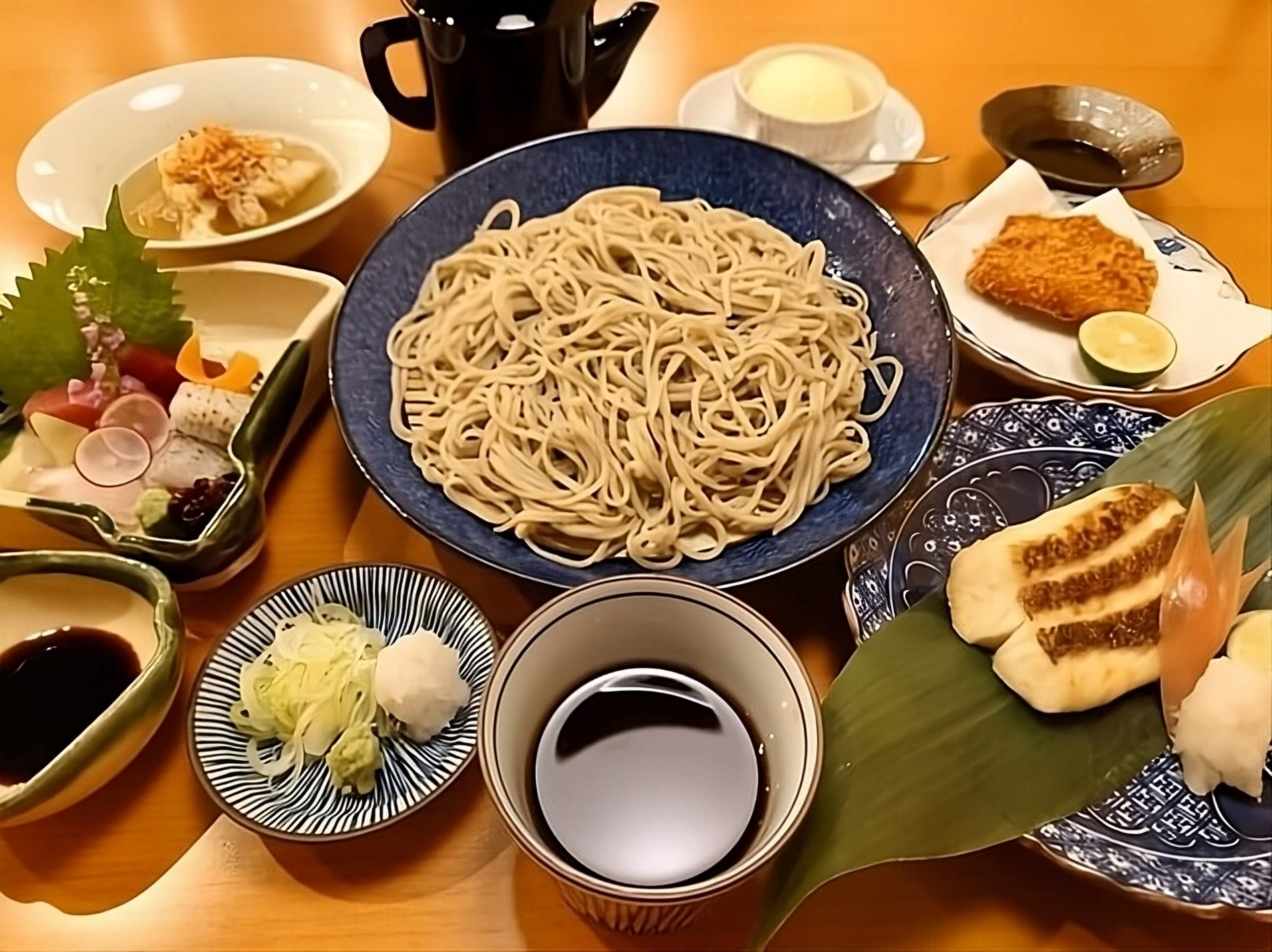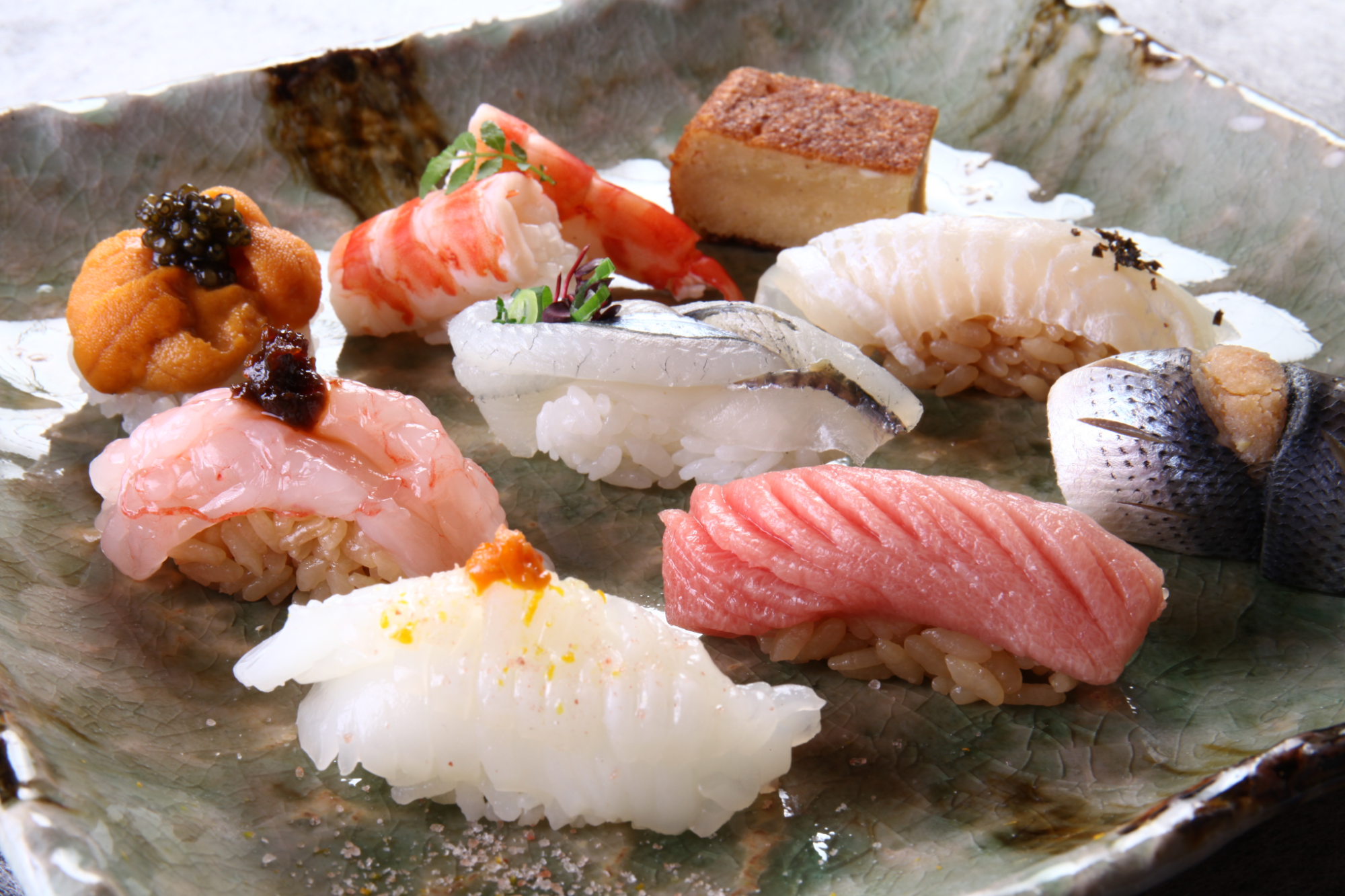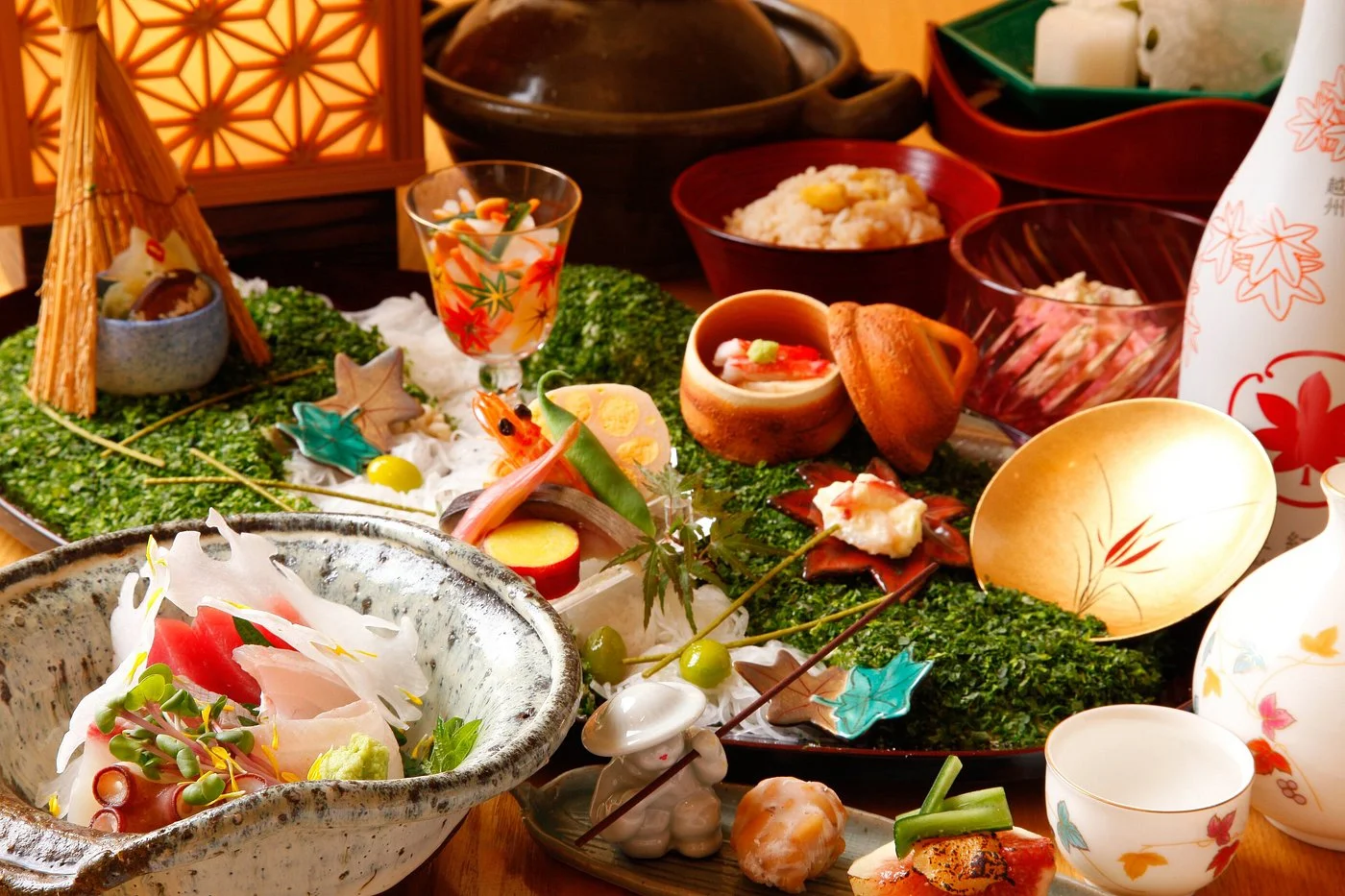When planning a trip to Japan, two of the most popular destinations are Tokyo city and Kyoto city. Whether you’re drawn to the bustling metropolis of Tokyo or Kyoto’s rich history and culture, getting from one city to the other can be a seamless experience, especially if you take the shinkansen bullet train.
In this post, we’ll be going over all the basic info about the shinkansen, and the best ways to enjoy a shinkansen during your adventures in Japan.
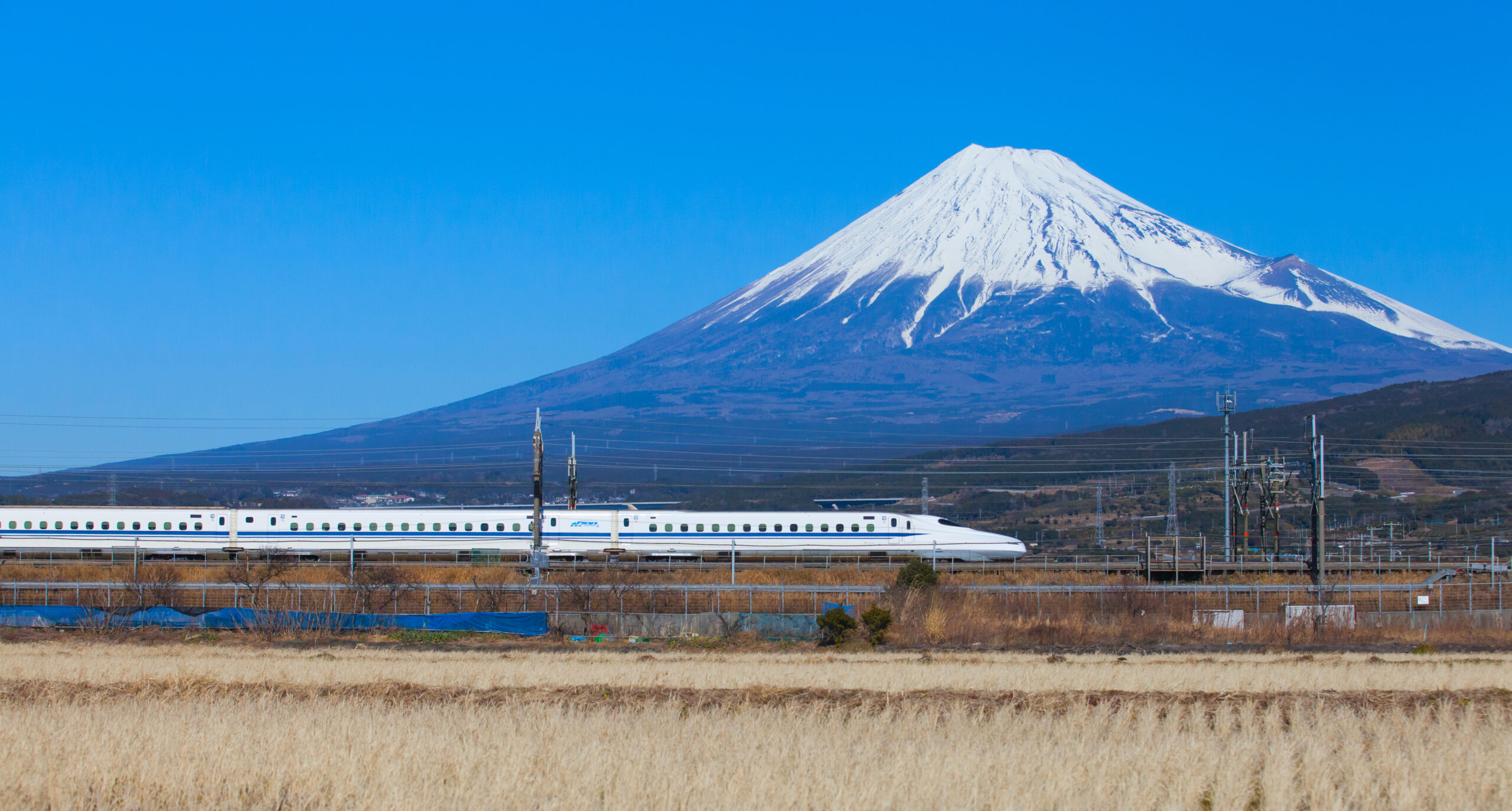
The shinkansen, also known as the bullet train, is a high-speed train designed to travel at 320 km/h~ (200 mph~), and has been operating on Japan’s railways since the 1964. These trains connect major cities throughout Japan, making them incredibly convenient and efficient.
If we are just considering speed, as of 2023, the “Hayabusa” train is known to be the fastest shinkansen train in Japan. There are 10 different shinkansen lines that run throughout Japan, and on average, transports a total of 1 million passengers per day.
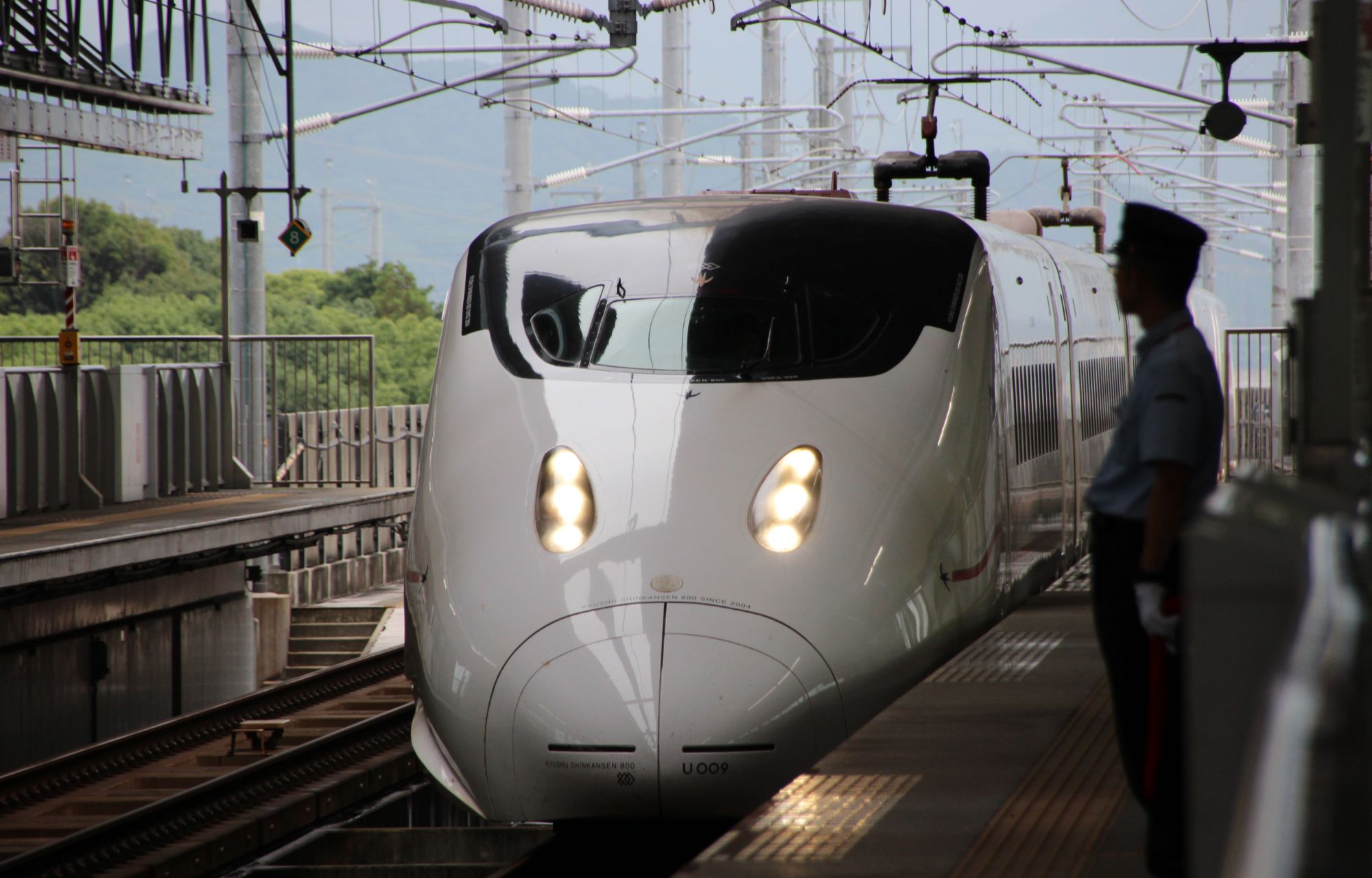
Taking the bullet train from Tokyo to Kyoto is surprisingly simple. Follow the simple step-by-step guide below:
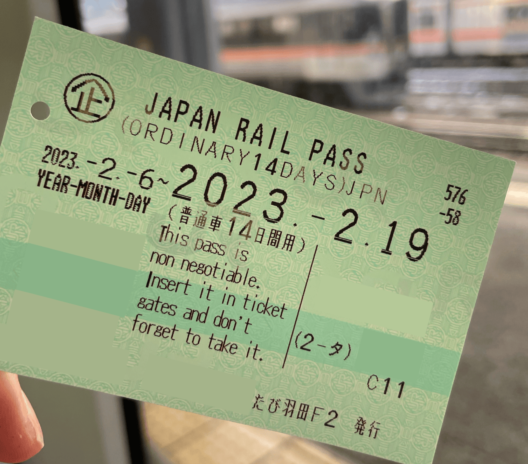
If you are a JR Rail Pass holder, you’ll have unlimited access to the JR public transport (including buses, ferries, airport transfers, and the Shinkansen bullet trains) for a designated time frame (which includes the Shinkansen).
Therefore, conveniently, if you plan on sitting in the non-reserved seats section, you can pass through the ticketing gate with your rail pass without purchasing an extra ticket. However, if you’d like to sit in the reserved seats section, make sure your stop by “Midori no Madoguchi” (JR Ticket Window) as you’ll need to pay an additional fee to reserve a seat.
Read this article to find out if you should purchase one for your next Japan trip
One important thing to note for JR Rail Pass holders is that you won’t be able to ride the “Nozomi” shinkansen train, as it is not covered with your JR Rail Pass. You will need to catch the “Hikari” or “Kodama” trains, but we recommend the “Hikari” as it is slightly faster. The difference between these 2 trains and the “Nozomi” train is the number of stops that are made. (Nozomi trains make less frequent stops).
If you’d like to use the Nozomi shinkansen train, you will need to pay the fare in full.
With the shinkansen, when purchasing your tickets, you can choose to sit in the reserved seating area or non-reserved seating area. However, as many passengers travel along the line between Tokyo City~Kyoto City, we highly recommend reserving a seat.
The difference in cost between the reserved seats and non-reserved seats falls between 330 yen〜1,990 yen, but on average is about 530 yen. JR Rail Pass holders will automatically be able to board the non-reserved seats and reserved seats (so long as it is the Hikari or Kodama train).
If you would like to sit in a reserved seat, you won’t be charged an extra fee, but you will need to make a seat reservation ahead of time at the JR Ticketing Office (Midori no Madoguch – みどりの窓口).
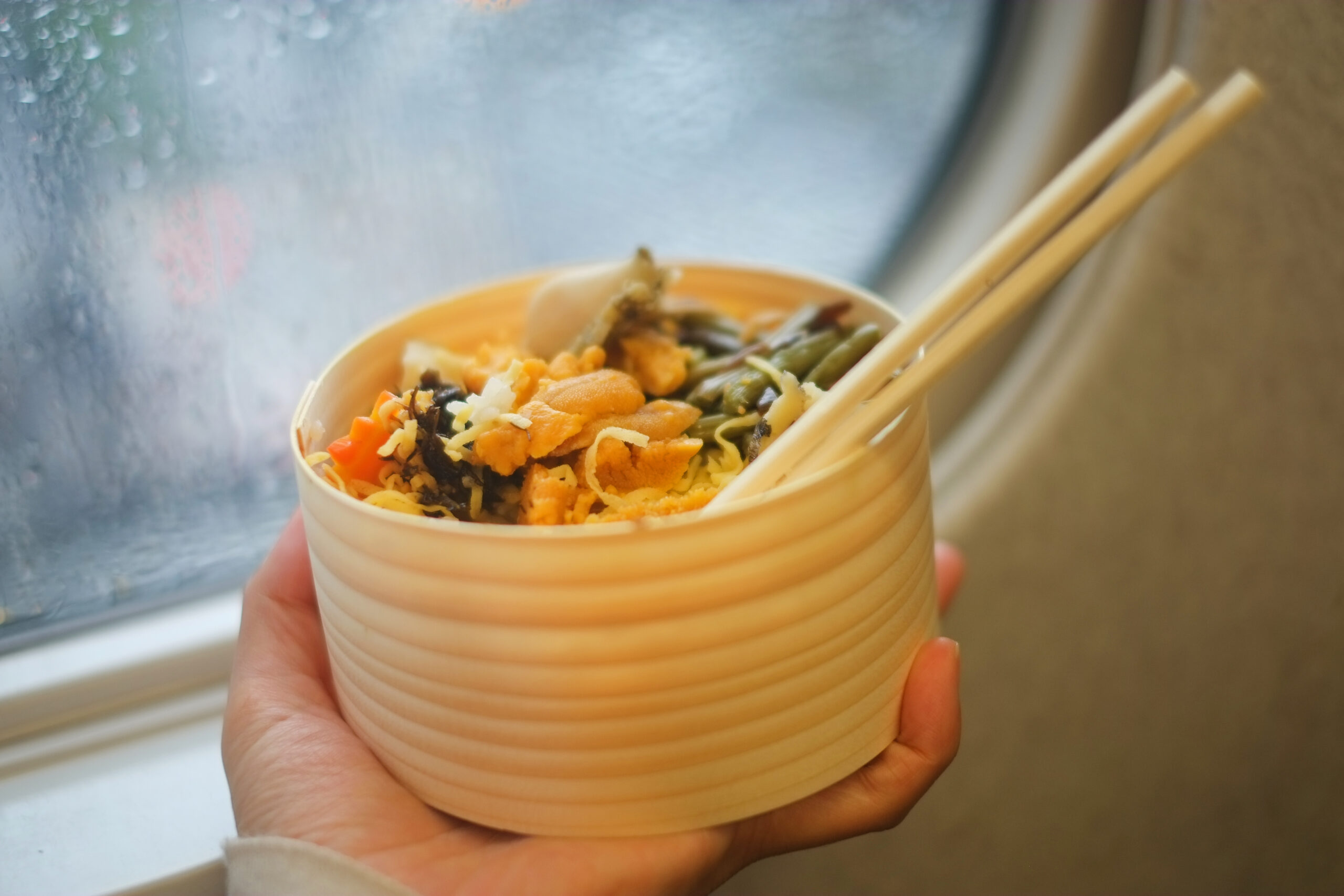
While the shinkansen was once famous for its food carts (where JR staff members would walk up and down the aisles pushing a cart with snacks, drinks, and even bento boxes), they sadly no longer offer this food cart service as of October 2023.
Therefore, if you’d like to eat snacks, have a little drink, or eat a meal on the train, you’ll have to purchase your food before boarding the train. Passengers who have purchased tickets for the Green Car will still have the option of purchasing food via their mobile ordering service. (Sometimes, train attendants stop by passenger seats with baskets of snacks for purchase, too!)
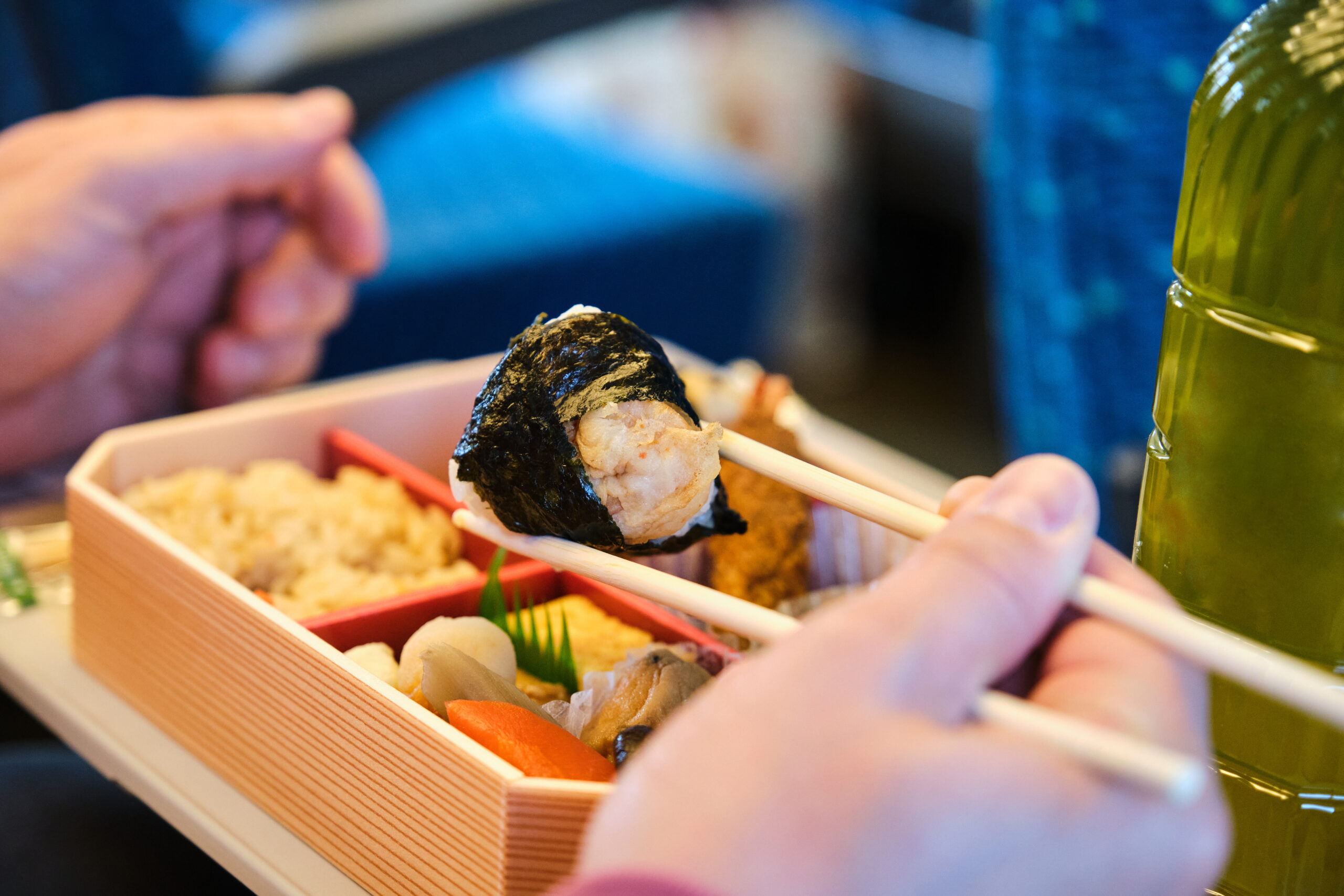
If you want more of a full meal, we recommend grabbing an ekiben (eki = station / ben = bento box) before jumping on the shinkansen train. You’ll find that throughout major stations in Japan, many shops will sell bento boxes (packed lunches) that you can purchase and bring onto the train. Each seat comes with a cup holder and fold out tray, so you’ll be able to enjoy your meal quite comfortably.
Arriving at Kyoto – Once you arrive at Kyoto, you’ll be at their major railway in the city’s center. There are 2 main exits (train gates) at Kyoto Station.
・ Hachijo Gate (South Gate)
・ Chuo Gate (Central Gate, Kyoto Tower side)
If you are not transferring to the Kyoto city subway line or another train line, be sure to exit from one of the 2 main gates. Once you’ve exited, you can catch a taxi, or bus to get to your next destination or hotel.
Rent an entire traditional Japanese house during your stay in Kyoto : MACHIYA RESIDENCE INN
Did you know that the bullet train is actually one of the best ways to view Japan’s iconic landmark, Mount Fuji?
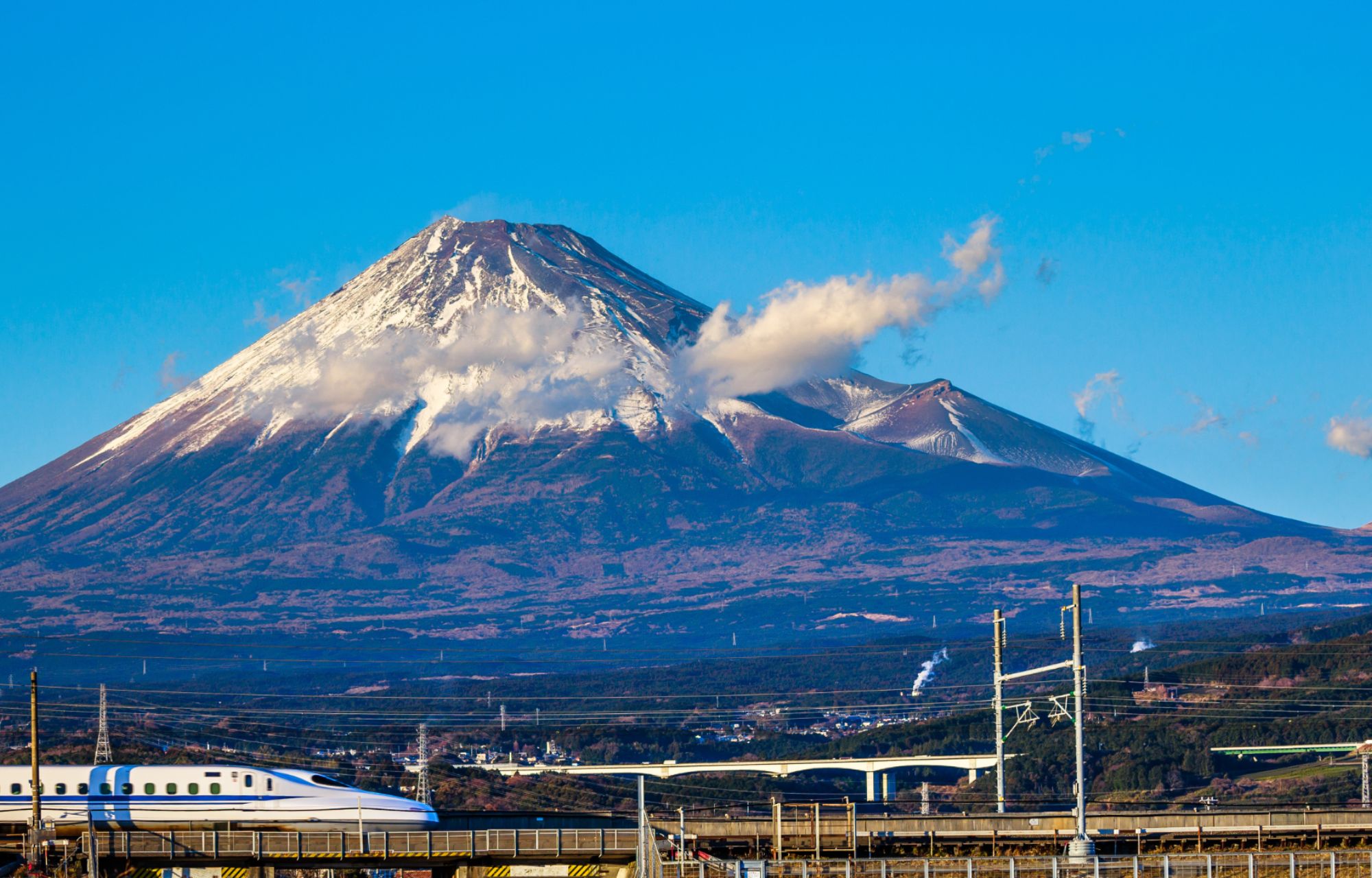
When taking the Tokaido & Sanyō Shinkansen line, there’s a way to guarantee that you can get a wonderful view of the magnificent Mount Fuji (if it is sunny, that is).
The Tokaido Shinkansen has a row of five seats. These are in a row of three seats and a row of two seats. The seats in a row of three are labeled A, B, and C, while the seats in a row of two are D and E.
If you want to catch a glimpse of Mount Fuji from your seat, make sure to reserve seat E. You’ll get the best view of Mount Fuji just after passing Shizuoka Station. Once your train has passed through Shizuoka Station, you’ll go through a tunnel and pass by the Fuji River. Once you’ve passed the river, you’ll have an excellent photo opportunity to capture Mount Fuji.
Did you know that Mount Fuji is the tallest mountain in Japan? It is located in the Fuji-Hakone-Izu National Park, about 100 kilometers southwest of Tokyo. It’s an active stratovolcano that stands 3,776.24 meters (12,389 feet) tall and has been considered a sacred site in Japanese culture for centuries.
If you are traveling during Japan’s 3 biggest holiday seasons, yes, you will need to reserve shinkansen seats for specific shinkansen trains. As of 2023, the JR Central & JR West Nozomi Shinkansen bullet trains have been completely “Reserved Seats Only” during Golden Week (May), Obon (August), and New Years (Dec.~Jan.). There will be NO “Unreserved Seats” available during these periods, which means that you won’t be able to jump on a Nozomi Shinkansen without a pre-reserved seat. However, “Unreserved Seats” will be available on the Hikari & Kodama shinkansen trains.
The Nozomi Shinkansen is the fastest shinkansen (super express bullet train) offered for people traveling between Tokyo Station and Hakata Station (Kyushu, southern island). There are fewer stops in comparison to the ‘Kodama’ and ‘Hikari’ shinkansen. The most commonly used stations are: Tokyo, Shinagawa, Shin-Yokohama, Nagoya, Kyoto, Shin-Osaka, Shin-Kobe, Okayama, Hiroshima, and Hakata.
In general, the 3 holidays fall between the following dates (The specific dates will change slightly year by year):
If you want to learn more about these 3 specific holidays & each holiday period, take a look at this article here.
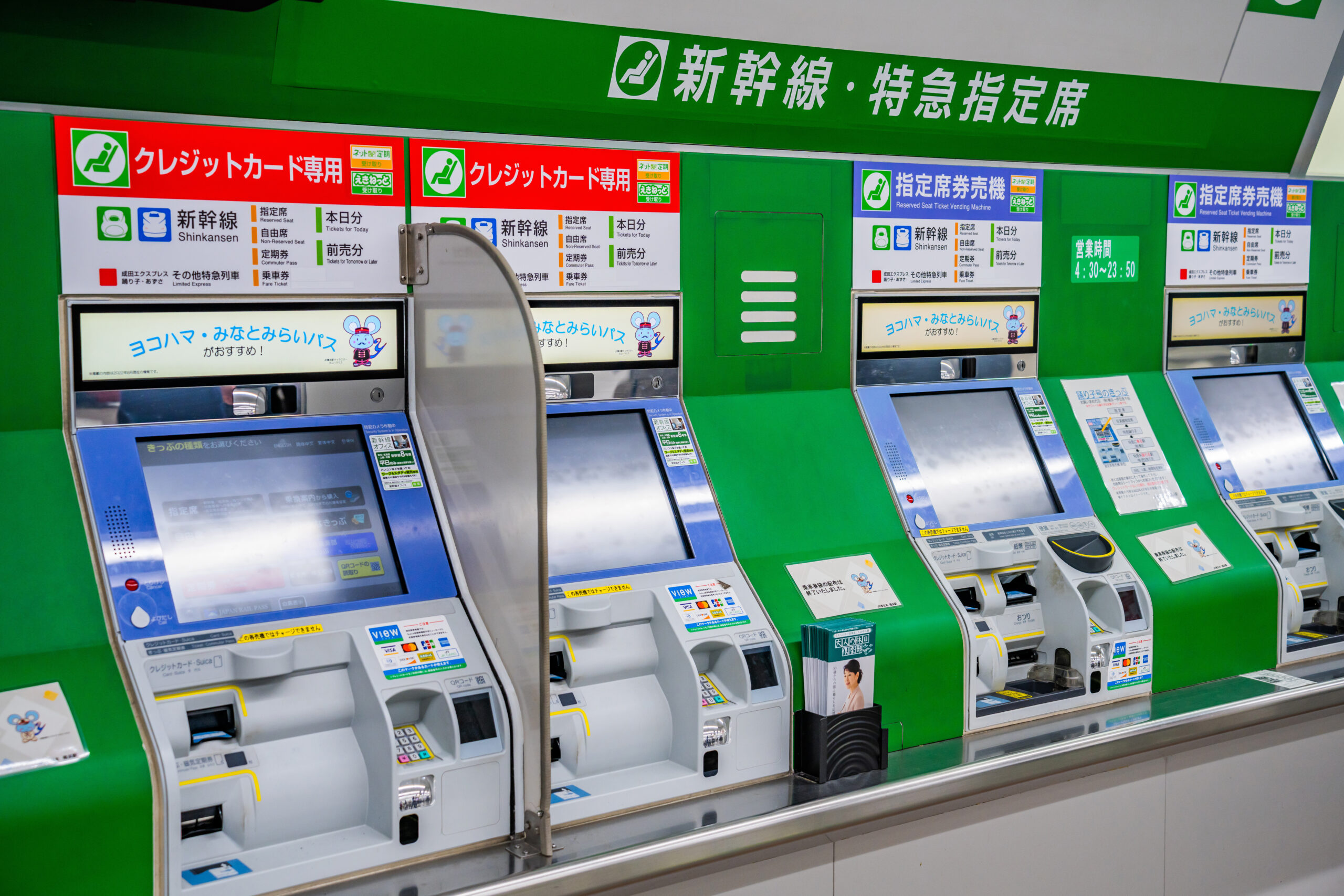
During the off-season, you can reserve the shinkansen bullet train a few ways. Below are the most common ways:
If you plan on traveling during holidays & high travel seasons, we recommend reserving your train tickets well in advance on the Smart Ex Portal, as seats fill up very quickly (for Nozomi Shinkansen & all other Shinkansen, too).
Online (Smart Ex Portal): https://smart-ex.jp/en/index.php
If you are traveling to some of Japan’s most popular destinations (Tokyo, Shizuoka, Nagoya, Kyoto, Osaka, Hiroshima, Hakata, Kumamoto etc.) use the online portal above to reserve your seats before you arrive in Japan! Depending on the train, you can make a reservation up to 1 year in advance.
Train Station (Midori no Madoguchi: Green Window)
If you haven’t reserved a seat, and would like assistance from a train station attendant, this is the place you’ll want to go. Midori no Madoguchi is a service desk that you can use if you require assistance in purchasing or changing train tickets for long distance trains.
If you know the city that you want to arrive in, but can’t quite figure out how to get there in the most cost-efficient way or fastest way, just ask the train station attendant in person.
Note that depending on the station (major station) or the time of day, there may be long lines to use this service! We recommend going early in the morning or stopping by the day before to make any inquiries or train ticket purchases.
Train Station (Midori no Hanbaiki: Green Ticketing Machines)
If you don’t need the help of an attendant, you can also make your purchases & reserve seats via a ticketing machine (these will also be green). As long as you have a destination, date & general time in mind, you’ll be able to easily navigate these machines. Don’t be intimidated by the number of options! (English, Chinese, and Korean menu also available).
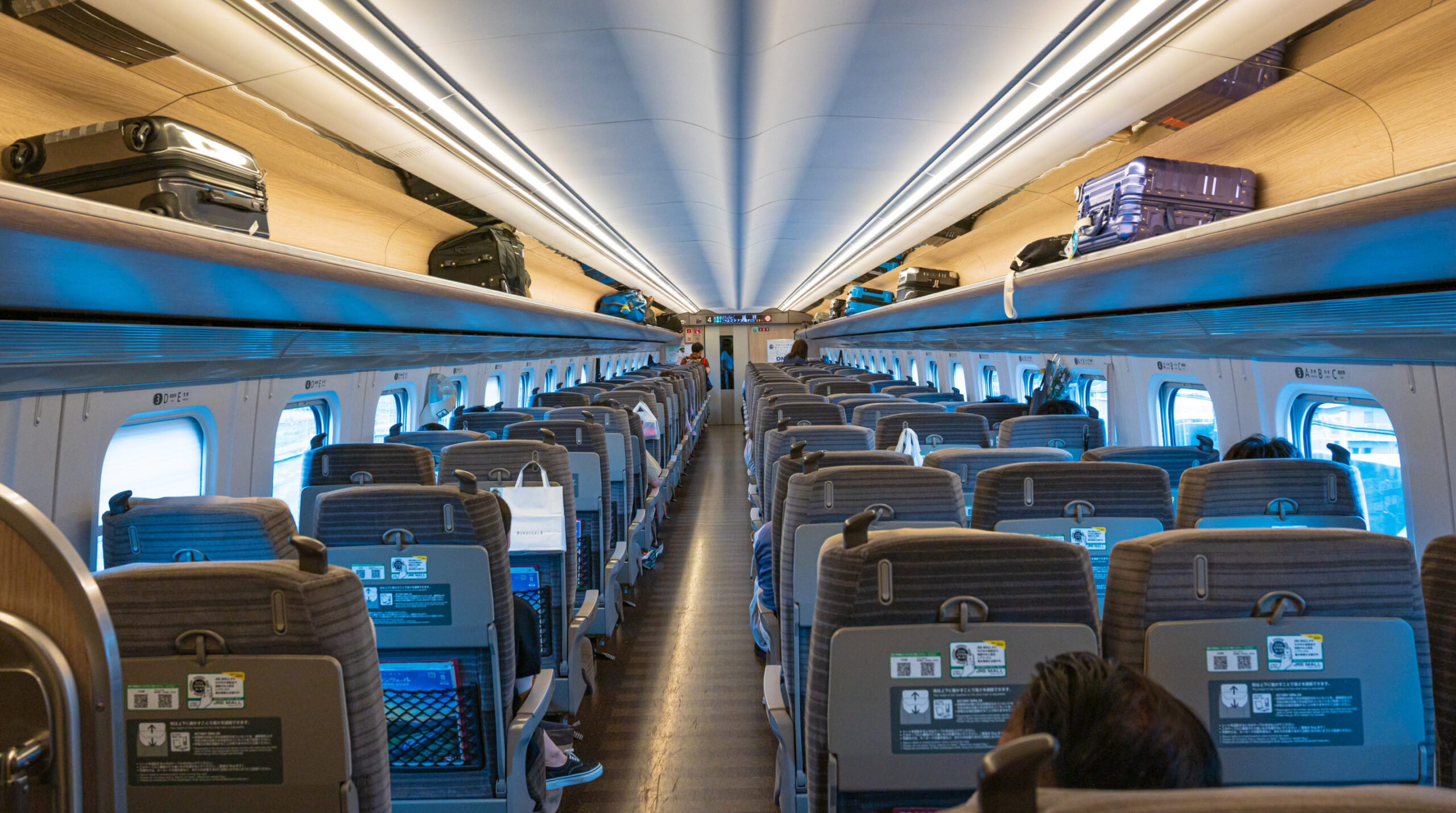
The shinkansen provides overhead luggage storage for all seats. You’ll have enough space to store a large backpack or small suitcase. For your luggage to be classified as a backpack or small suitcase, it must be 160cm or less on three sides.
If you use the bullet train from Tokyo to Kyoto and need more luggage than the standard size (160cm), you must reserve an “Oversized baggage” seat. This is a rule that has recently been implemented, and requires you to purchase a “Seats with oversized baggage areas” instead of purchasing a “Standard” JR Rail Pass ticket.
Unlike the standard luggage storage area that’s located above your seat, you’ll have a designated area just behind your seat where you can store large luggage. Therefore, if you’re traveling with large suitcases, bags, or strollers over 160cm, we recommend making a reservation for these designated seats.
To make a reservation for seats that can accommodate larger luggage or suitcases on the shinkansen bullet train, stop by the “Midori no Madoguchi” (JR Ticket Window). You’ll find these ticket windows at all major train stations.
So if you’re looking for the most efficient & best way to travel from Tokyo to Kyoto, it’s with the JR shinkansen bullet train. What’s more, if you have the JR Rail Pass, we definitely recommend that you to use this method. It’s easy, effective, great for the environment, and you just might be able to see the famous Mount Fuji, too.
If you’re looking for the most convenient and efficient way to travel between Kyoto and Osaka, take a look at this blog here: The Best Way to Travel from Osaka to Kyoto
See our recommended accommodations in Kyoto : THE MACHIYA HOTELS
Make your trip a truly local experience, and go where the locals go. If you're wondering where the locals go to eat when hanging out with family, celebrating with friends, stopping by for an after work drink... look no further.
Machiya Locals Website